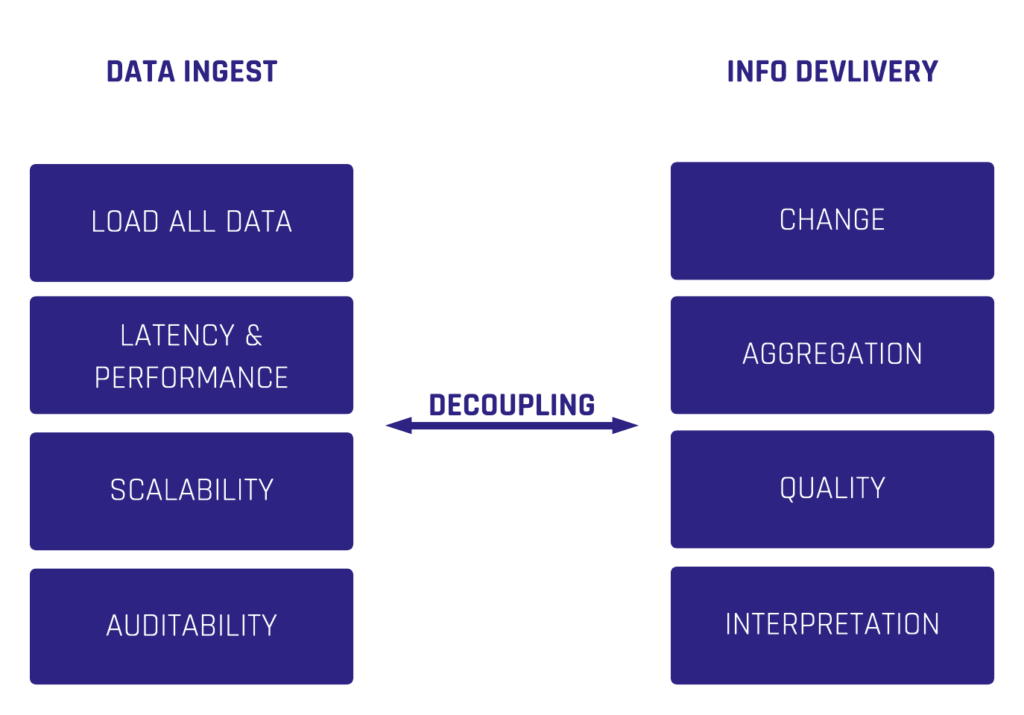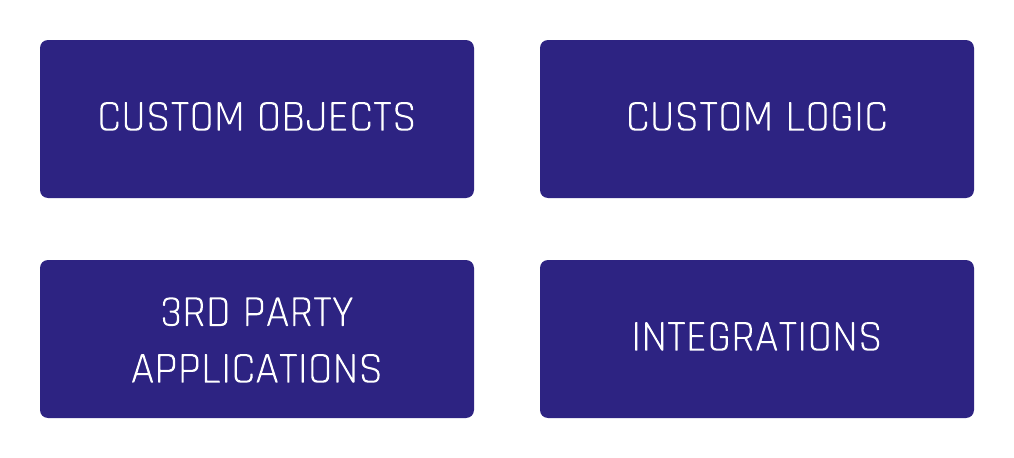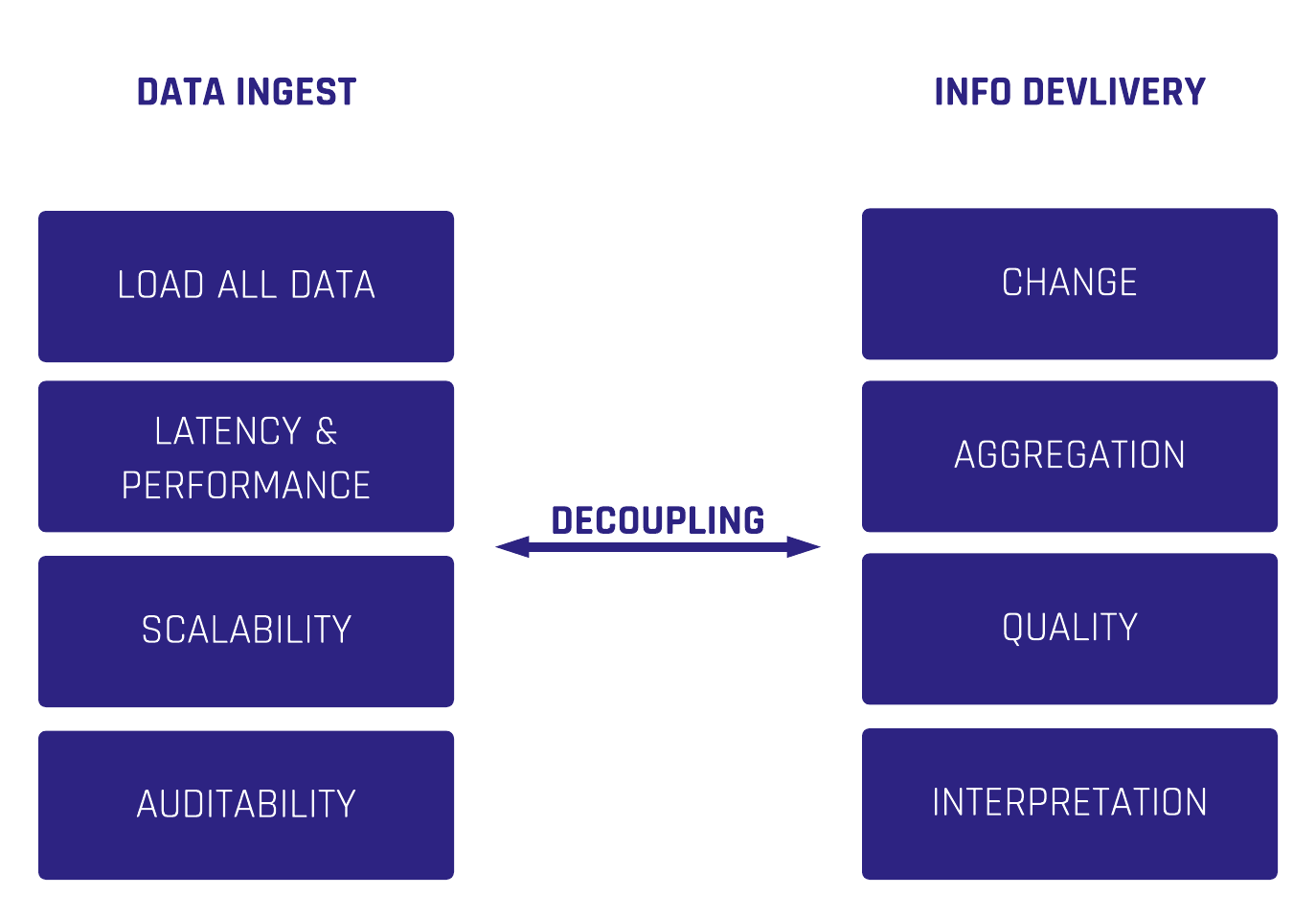It’s a Match!
Data integration with Salesforce can be tricky and needs a system of business intelligence to handle the complexity. Data Vault is capable of decoupling all the necessary business-driven changes, extensions and customizations to the platform while maintaining the ability to become the cornerstone of an integrated architecture. The decoupling is a part of our Data Vault Boot Camp and is summarized in Figure 1. Scalefree can provide knowledge and implementation assistance in both Data Vault as well as Salesforce therefore creating the optimal partner for your Salesforce integration project.
In this article:

Figure 1. Data Vault Decoupling
Agile Integration of Salesforce
Salesforce is optimized for transactions and not for analytics, in fact this is one reason we want to integrate it. More likely than not your Salesforce system is not “just a CRM” anymore. Over the past decade, Salesforce has evolved into a general purpose business application platform and maintains many levels of functionalities if one chooses to utilize them.
Salesforce can deliver a Sandbox for your own developers and third parties to develop any application they want. In fact, our customers often go on to create a variety of application add-ons and customizations that are made within Salesforce. This means that your integration will become more complex over time as more elements are added to the “one” source system. For this reason, it fits very well with Data Vault.
We can extend the vault, as technical integration and business needs are decoupled by the very idea of Data Vault. This is where all the standards that you used to build your Vault come into play and save your day. Now you can leverage the benefits of having an extensible and agile data warehouse.
In our recent webinar Salesforce and Data Vault we discussed some of the change drivers around Salesforce, which are summarized in Figure 2. We also talked about how those change drivers can be defused by using Data Vault.

Figure 2. Salesforce Change Drivers
In addition to the Data Vault methodology, project Roles like the Domain experts can help with the communication between the source system operations folks and the data warehousing team. For more information on the roles, study Disciplined Agile Delivery (DAD) by Scott Ambler, which is now also a part of the Project management institute (PMI).
Of course, we have just touched the surface here as there are many topics we have not talked about yet. For example, some Salesforce related challenges can be either solved with an expensive workaround in the Data Warehouse or with some simple adjustments in Salesforce.
Also to be touched upon at a later time, how to deal with Salesforce limits like API calls or operational reporting limitations.
What topics are you interested in?
What challenges are you facing right now?
Conclusion
We have seen that the integration of Salesforce can be handled with Data Vault as both systems fit together quite well. Data Vault adds the agility your data warehouse requires within those changing and complex source systems that are needed to provide the highest possible business value to your organization while saving you re- engineering cost in the long run. In this way, you can create your own sustainable Salesforce data pipeline.
– by Markus Lewandowski (Scalefree)

